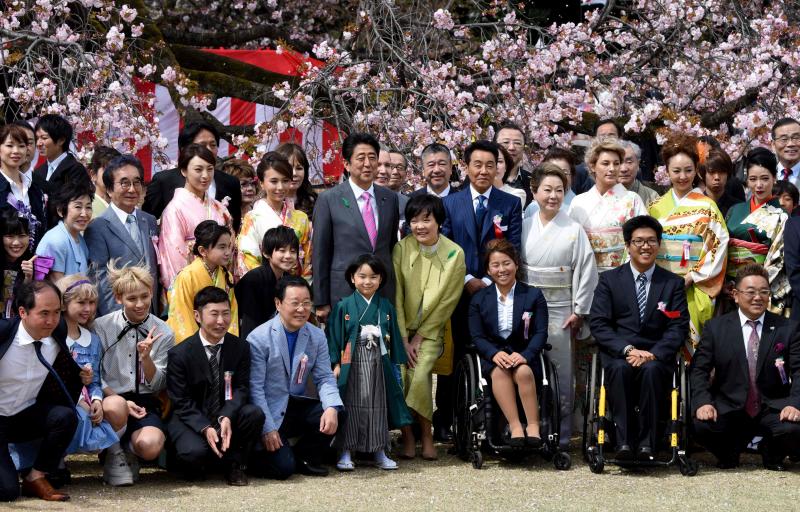Japan scraps cherry blossom party amid Abe cronyism criticism
Sign up now: Get insights on Asia's fast-moving developments

A file photo taken on April 15, 2017, shows Japan's Prime Minister Shinzo Abe (centre left) and his wife, Akie (centre right), posing with entertainers and athletes during the cherry blossom viewing party hosted by the Prime Minister in Tokyo.
PHOTO: AFP
Follow topic:
TOKYO (AFP) - The Japanese government said on Wednesday (Nov 13) it would scrap next year's annual cherry blossom party after Prime Minister Shinzo Abe came under fire amid claims that he invited too many of his own supporters.
The publicly funded event has been taking place in a Tokyo park since 1952 to honour people for their achievements, with the great and the good of Japanese political life mingling under the world-famous cherry blossom trees.
But opposition politicians have taken aim at Mr Abe, claiming he brought along 850 supporters from his local constituency for the festival, reportedly costing around 55 million yen (S$688,100) from the public purse.
In a surprise announcement, Chief Cabinet Secretary Yoshihide Suga told reporters that the government had "listened to various opinions" and as a result decided to shelve next year's party.
Mr Suga also pledged that the government would "clarify the criteria for inviting guests and make the invitation process transparent".
The number of guests invited to the event has been steadily increasing and so has the budget.
Local news agency Kyodo News said about 18,000 people took part this year - up from between 7,000 and 10,000 from before Mr Abe came to power in 2012.
The 55 million yen spent last year is also nearly double the budget from 2014, Kyodo added.
Japan's cherry blossom ("sakura") season is eagerly anticipated by locals and visitors alike.
The season is traditionally celebrated with "hanami", or viewing parties, in cherry blossom ho tspots, with picnics organised beneath the trees.
In general, blooms begin as early as March in the southern island of Kyushu and appear as late as May in northern-most Hokkaido.

